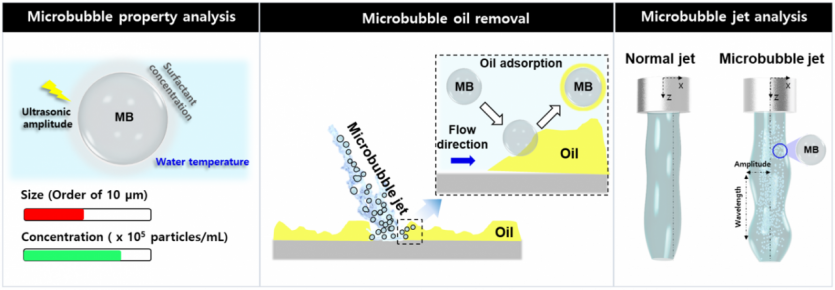Effective and Environment-Friendly Oil removal with Microbubble Jet
페이지 정보

조회 287회 작성일 25-05-08 16:30
본문
| Journal | Separation and Purification Technology |
|---|---|
| Name | Jungjae Woo, Yewon Kim, Hyungmin Park†, and Hyejeong Kim† |
| Year | 2025 |

Effective removal of oil contaminants from solid surfaces is crucial for various applications. However, traditional cleaning methods often involve the use of hazardous chemicals. Because of their stability and ability to adsorb pollutants, microbubbles are considered as a promising alternative for environmentally friendly cleaning. This study explores the enhancement of oil cleaning efficiency using a microbubble water jet. The properties of the microbubbles generated via ultrasonic agitation are examined under varying water temperatures, ultrasonic amplitudes, and surfactant concentrations. The microbubble jet demonstrates approximately 29 % enhanced cleaning efficiency compared with a single-phase water jet. Visualization techniques, including particle image velocimetry, reveal that this enhancement is driven by the behavior of microbubbles consistently adsorbing oil through hydrophobic interactions as well as the instability and increased turbulence intensity of the microbubble jet. Additionally, the higher (by 7 %) spreading velocity of the microbubble jet indicates the free surface of bubbles results in a drag reduction. Consequently, this enables the jet to cover wider regions to be cleaned effectively. The present findings demonstrate the potential of microbubble jets as an effective and eco-friendly alternative for oil removal and offer insights for their practical implementation in diverse fields utilizing microbubbles.